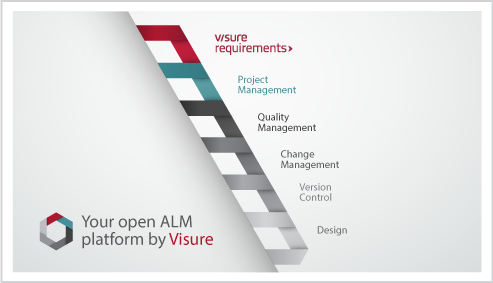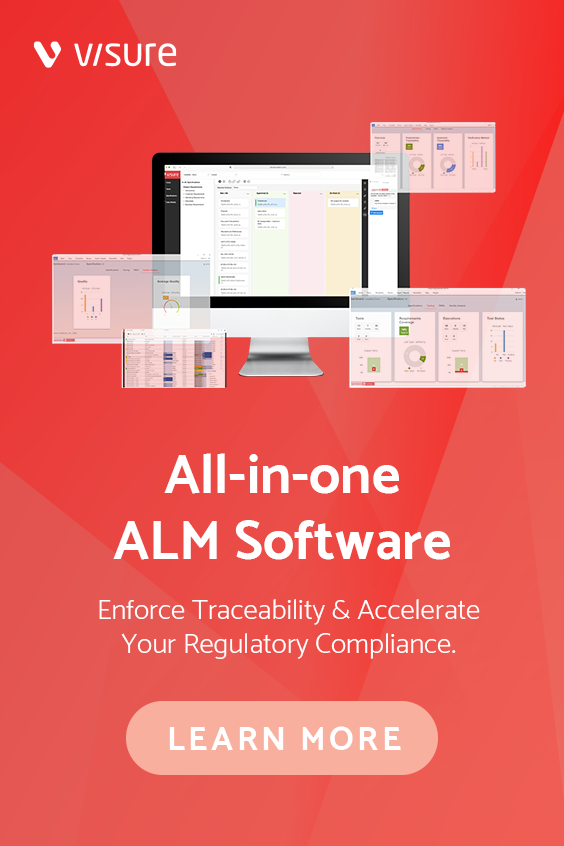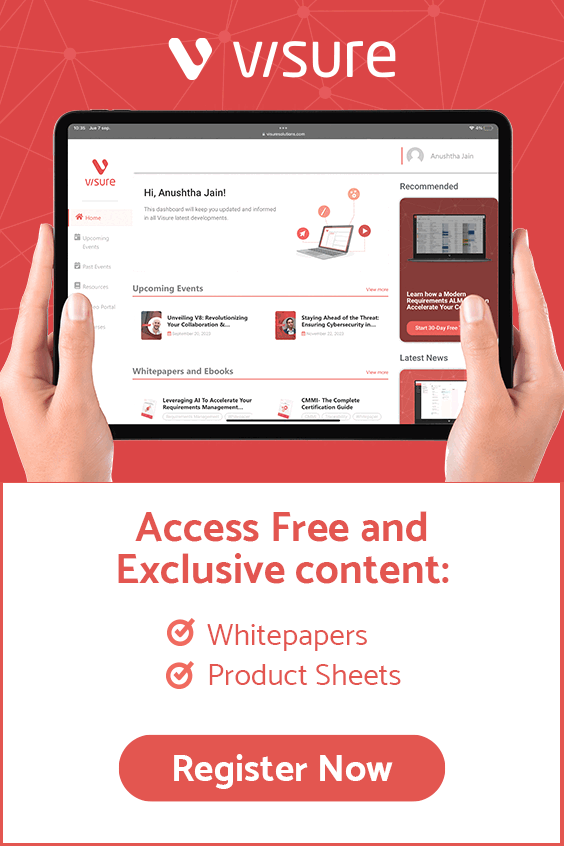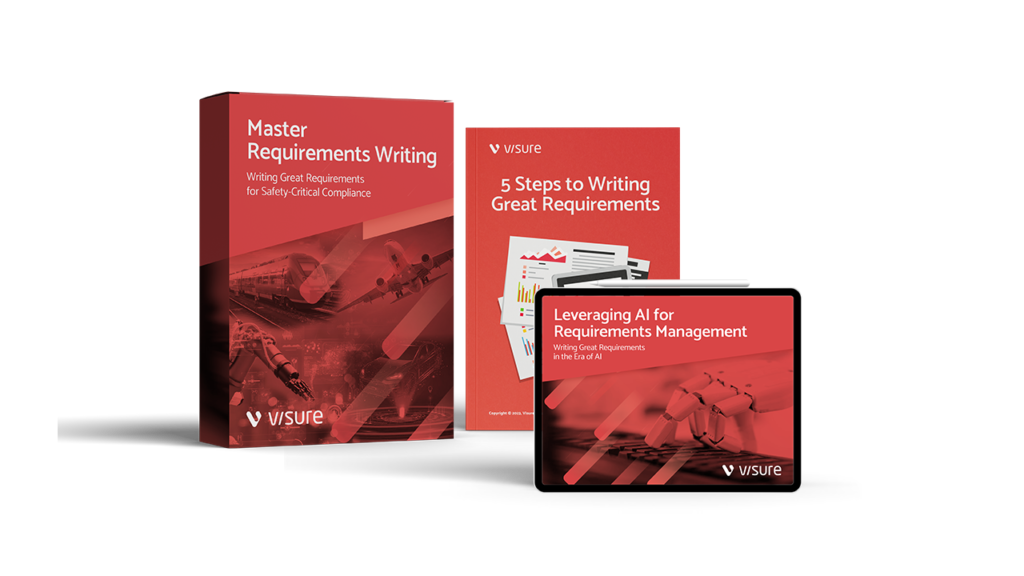What is Application Development Lifecycle Management (ADLM)?
Application Development Lifecycle Management, abbreviated as ADLM, is a complex procedure that involves different parties, recurrent processes, and various instruments that are used for regulating the complete lifecycle of the project from the very beginning to the end. ADLM ensures the smooth running of the established methodologies of an organization and higher productivity through integrated tools.
In simpler terms, ADLM is the procedure of specifying, designing, documenting, and testing the application. It covers the whole lifecycle from the start to the end of the project. It begins with the idea of the application throughout the development, goes to testing, deployment, support, and finally, the user experience.
Often people believe that ALM and ADLM are the same. There is just a tiny difference between them. ALM is the former term for ADLM that covers the product lifecycle management by governance, development, and maintenance. The major things ALM covers include project planning and tracking, quality assurance, requirements management, impact analysis, test and defect management, change management, governance, project management, and release management. On the other hand, the modern ADLM also covers DevOps, software engineering culture, and the practices that are used for unifying the Development and Operations of software.
Why is ALM important?
There is this big question as to why ALM is important. The following 10 points will make you understand why exactly.
- Smooth Development Process – Development of any application requires standardized processes and documentation. Here, the ALM tool can be used as the sole centralized hub where we can keep all our resources. ALM enables any organization to streamline all the processes and resources in a single place and also provides an overview of the whole development process. This results in higher accountability, timely updates, and improved traceability.
- Preparing and Organizing the Development Process – ALM tools help manage the application development lifecycle. The planning phase begins as soon as the clients share their project requirements. With the help of ALM tools, you can draw up your plans more efficiently along with tools that fit your specific requirements. They can either support waterfall methodology or agile methodology or both.
- Maintain Budgets & Productivity – The first step in any planning is to set up a financial budget. Choosing methodologies that can potentially drain budgets and productivity is simply a stupid move. ALM integration eliminates the requirements for varied environments for testing. Also, with all-in-one software, review and management become easier too.
- Team Management – Communicative and coordinated workspace deeply suits efficient and smooth software development. ALM can keep all the members on the same page with the real-time strategies, changed requirements, and regular project status. Remote jobs are highly and positively affected by this.
- Speed + Quality – If the team is not collaborated appropriately, the chances for loopholes, delayed deliveries, and low product quality can increase. When you operate your project on ALM software, the integrated tools deliver the user requirements successfully, that too with high quality.
- Carrying the Load – There are high possibilities that the project might get stuck at some point. In such cases, apt choices and decisions are needed. ALM comprises the resources and processes in one tool which consequently, benefits the determination of solutions at each step.
- Employee Satisfaction – Employees show their dedication and interest through their productivity levels. Appreciating their efforts and choices is a must. ALM provides the freedom to the employees to use the tools and make their own choices and decisions. This keeps them motivated and satisfied, enhancing their productivity.
- Team Productivity – Team productivity is of the utmost importance for a successful outcome in any project. ALM integrated software helps in distributing and allocating the tasks easily. Also, it helps to track productivity, quality, and progress regularly too.
- Fixing Bugs – Testing is done to make sure that the application has as few bugs as possible. ALM tools provide a platform for uniting the development and testing processes. This helps reduce the chances of loopholes and enhances the quality of the application.
- Customer Satisfaction – Every service by every organization strives in order to satisfy its customers. ALM tools help maintain high visibility and transparency amongst the service provider and the clients.
Advantages of ALM:
Some advantages of ALM include:
- Decision Making – ALM facilitates real-time decision-making by allowing the organizations to make competent determinations about their applications as they move further. ALM is highly important especially when organizations implement interdependent projects which have complex oversight requirements.
- Develop Speed and Agility – ALM provides the development teams with the power of producing applications at a constant speed and agility to maintain a position in this competitive era. Furthermore, it helps in aligning the software development goals by providing sole source code management along with organizational objectives.
- Enhances Quality and Compliance – ALM ensures that the development team has all the tools they need to develop a high-quality software application. ALM efficiently manages quality with the help of source code management and enhancing a collaborative environment. Communication is highly essential during the governance stage to ensure that the development and testing teams are in sync with the information.
- Enhances Efficiency – ALM provides better and more precise methodologies and estimations when starting a new project. It further provides support to project management through recourse planning.
- Boosts Testing – ALM provides the organization with end-to-end solutions for development and testing. Successful application development requires strong communication between the development and testing teams. Consequently, the issues are identified as well as resolved swiftly and on time.
- Enhances Visibility – Visibility is a crucial aspect when developing an application. It ensures that the development runs smoothly. ALM provides that visibility. ALM enables you to meet the exact number of requirements that have already been satisfied.
Phases of ALM:
ALM might split into various phases, depending on the methodology (Waterfall, Agile, or DevOps) you opt for. It is broadly divided into three phases, namely:
- Governance – This is to ensure that the project is built and carried out following the best project management practices. In this phase, it is also determined how the product would be serviced throughout the lifespan and how it would be disposed of at its expiration. It includes requirement management, resource management, data security, user access, review, verification, deployment control, and rollback.
- Development – This term actually refers to the recurring phase during ALM. This phase is considered to cover not only original creation but also ongoing developments such as revisions and upgrades. It includes identifying current problems, planning, designing, building, and testing the application.
- Operations – Also known as maintenance, is the stage at which the developed product is finally deployed. It is important to follow the guidelines set under the ALM governance phase. It includes deployment of the application and maintaining it off the technology stack.
Stages of ALM:
ALM has a few stages as well. They include:
- Requirement management – This is the first and foremost step in the ALM cycle. During this stage, requirements are documented, analyzed, tracked, and prioritized. This process goes on throughout the whole lifecycle of the project.
- Design – During this stage, the usability of the project is improved in order to enhance the satisfaction and loyalty of the customers.
- Build Management – During this stage, the source code files are converted into standalone software components. Basically, the idea of the application turns into an actual application during build management. Application is built, tested, and deployed during this stage and testers commence drafting the test cases and test scripts for further testing of the application.
- Software Configuration Management – Abbreviated as SCM, is a stage when the deployment team works on the systematic organization and management of the project. They also control the changes that are made in the documents, codes and other entities during the ADLM.
- Operation and Maintenance Management – During this stage, basically the whole application is monitored and bugs are identified as well as resolved. Through this, you are able to plan and prioritize the next update on the project.
- Test Management – This stage is also known as the testing stage. The testers verify that the application is properly complying with the requirements stated during the initial processes.
- User Experience – This can be said as the longest stage in the whole ALM procedure. In this stage, major participation of testers and developers is not required. Instead, the participation of users is highly important. They basically check out the whole application and share their feedback. After that, the final application is launched or delivered.
ADLM VS SDLC?
ALM is sometimes confused with the software development life cycle (SDLC) because they both deal with the process of software development. The main difference is that SDLC is primarily focused on the development phase, whereas ALM is concerned with the entire application life cycle, from concept to maintenance and eventually decommissioning, and continues after the application is developed.
Application Development Lifecycle Management is a broader concept than Software Development Lifecycle Cycle. SDLC is limited to the phases of software development itself. ALM continues after development until the application is no longer used, and may span many SDLCs. SDLC can be considered part of application lifecycle management, primarily during the development, testing, and deployment stages. ALM may include several development life cycles for a given application.
What businesses benefit most from application development lifecycle management tools?
The main industries that have benefited from application development lifecycle management tools include healthcare, e-commerce, legal, fitness, aerospace, defense, and automotive. Furthermore, small and medium-sized enterprises are also highly benefited from application lifecycle management. ADLM helps SMEs by lowering their costs and increasing efficiency. Hence, a better and faster growth. Higher scalability, user-friendly features, handy integration, enhanced agility, and improved productivity also helps motivate SMEs toward adopting ADLM.
We, at Visure Solutions, are well aware that each industry and business model has inherent problems. Therefore, we analyze how we can offer solutions for specific needs, sectors, and models through flexibility, innovation, and standards. The various sectors Visure provides services to include Aerospace and Defense, Automotive, Banking and Finance, Medical Devices, Pharma, and Software Factories.
Why Choose Visure?
is one of the most trusted modern ALM platforms that specialize in requirements management for organizations of all sizes across the globe. It’s a must-have tool for teams building complex products, systems, and software, which require end-to-end traceability from conception to testing and deployment, all the way to source code, along with standard certification compliance. Visure integrates through the whole ALM processes including risk management, issue and defect tracking, traceability management, change management, and various other areas like quality analysis, requirements versioning, and powerful reporting.
Some of Visure’s most-liked features include:
- Flexible User Interface – Visure guarantees integration of the solutions with other tools that have already been implemented with open standards and connectors. Visure also provides personalized technical support to its clients and helps them implement initiatives that will help them improve their requirements management procedures.

- Pre-Built Templates – Visure offers pre-built templates for you as a starting point. This saves a lot of time for our customers when they want to start fresh. These templates are customizable and can be changed according to one’s requirements.
- Standards – Visure supports standard compliance templates for ISO 26262, IEC 62304, IEC 61508, CENELEC 50128, DO-178B/C, FMEA, SPICE, CMMI, etc.
- Quality Assistance – Our clients receive the best quality assistance from writing down your requirement models and providing on-premises services. Visure assists you when you can not trust the cloud for your private data. We also provide quality analysis for the requirements processes in your organization in order to ensure for things run as smoothly as possible.
- Integration – Data analysts can create relationships, generate hierarchies, manage traceability and automatically capture requirements from MS Excel, Outlook, and MS Word. Visure also supports integration with other ALM tools like IBM DOORS and JIRA through Requirement Interchange Format OMG standards.
- Data Models – Visure supports many development processes like Agile, V-model, etc. At Visure, we ensure to analyze the specific problems that are inherent in business models and provide a solutional data model for each specific need. These data models are customizable to relate to the client’s internal processes and can be enforced as required.
Companies who actively use Visure, claim a clear impact with on-time project deliveries, project compliance, and reduced development costs and cycle times.
Other Tools For ALM:
Jama is another application lifecycle management tool that provides a great platform for risk and test management. Jama helps you minimize the risk of delay, defects, cost outrun, and the manual efforts that have been put in by the development teams. Jama assists you in building complex products and systems, improving cycle times, enhancing the quality, reducing the rework, and minimizing the efforts used for proving compliance.
Spira Teams is another ALM platform that helps you in managing your requirements, releases, tests, issues, and tasks in a single integrated environment. It supports agile project management and methodologies such as Scrum and Kanban. It also offers an incorporated dashboard with important metrics of the project.
Rommana is a fully integrated set of tools and methodologies that supports all aspects of a project. Rommana provides full collaboration and traceability between all the artifacts of the project and people. It also offers complete access to all the artifacts of the project by all team members anywhere anytime.
Version One is the world’s first ALM platform. This platform is exclusively designed to support agile and lean software. Version One supports management methodologies like Scrum and Kanban and makes it super easy to plan, track, and report all the progress across all team members, programs, portfolios, and enterprises.




